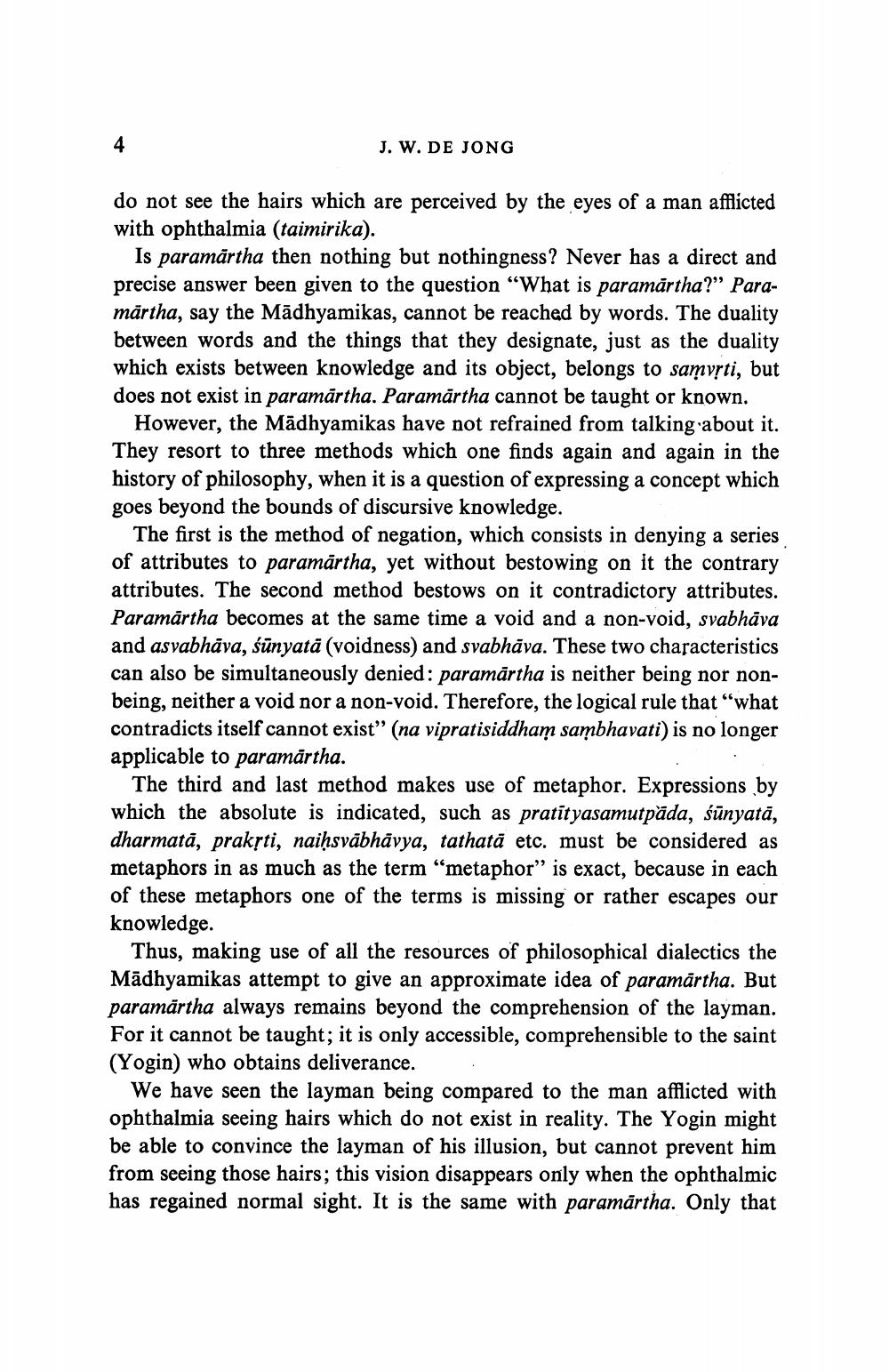________________
J. W. DE JONG
do not see the hairs which are perceived by the eyes of a man afflicted with ophthalmia (taimirika).
Is paramärtha then nothing but nothingness? Never has a direct and precise answer been given to the question “What is paramärtha?” Paramärtha, say the Mādhyamikas, cannot be reached by words. The duality between words and the things that they designate, just as the duality which exists between knowledge and its object, belongs to samvrti, but does not exist in paramārtha. Paramārtha cannot be taught or known.
However, the Mädhyamikas have not refrained from talking about it. They resort to three methods which one finds again and again in the history of philosophy, when it is a question of expressing a concept which goes beyond the bounds of discursive knowledge.
The first is the method of negation, which consists in denying a series of attributes to paramārtha, yet without bestowing on it the contrary attributes. The second method bestows on it contradictory attributes. Paramartha becomes at the same time a void and a non-void, svabhāva and asvabhāva, sūnyatā (voidness) and svabhāva. These two characteristics can also be simultaneously denied: paramărtha is neither being nor nonbeing, neither a void nor a non-void. Therefore, the logical rule that "what contradicts itself cannot exist" (na vipratisiddham sambhavati) is no longer applicable to paramārtha.
The third and last method makes use of metaphor. Expressions by which the absolute is indicated, such as pratityasamutpäda, sūnyatā, dharmată, praksti, naiḥsvābhāvya, tathată etc. must be considered as metaphors in as much as the term "metaphor" is exact, because in each of these metaphors one of the terms is missing or rather escapes our knowledge.
Thus, making use of all the resources of philosophical dialectics the Mādhyamikas attempt to give an approximate idea of paramärtha. But paramārtha always remains beyond the comprehension of the layman. For it cannot be taught; it is only accessible, comprehensible to the saint (Yogin) who obtains deliverance.
We have seen the layman being compared to the man afflicted with ophthalmia seeing hairs which do not exist in reality. The Yogin might be able to convince the layman of his illusion, but cannot prevent him from seeing those hairs; this vision disappears only when the ophthalmic has regained normal sight. It is the same with paramārtha. Only that




